Marie Curie
Article
Marie Curie is still the only individual to receive the prize in two different science categories. Her relentless resolve and insatiable curiosity made her an icon in the world of modern science. Indefatigable despite a career of physically demanding and ultimately fatal work, she discovered polonium and radium, championed the use of radiation in medicine and fundamentally changed our understanding of radioactivity.
Marie Curie was born Marya Skłodowska in 1867 in Warsaw. Her family struggled under a repressive Tsarist regime, which was trying to stamp out vestiges of Polish culture. Curie’s parents were Polish, and they were both teachers; their employment was precarious. Curie’s father moved from job to job, and the family to smaller and smaller apartments. When she was 11, Curie’s mother died of tuberculosis and her oldest sister of typhus.
As a teenager, Curie made a pact with her sister Bronya: she would support Bronya while she was in medical school in Paris, and then Bronya would pay Curie’s way. From the age of 17, for six years, Curie worked as a governess and tutor, while attempting to study in her spare time.
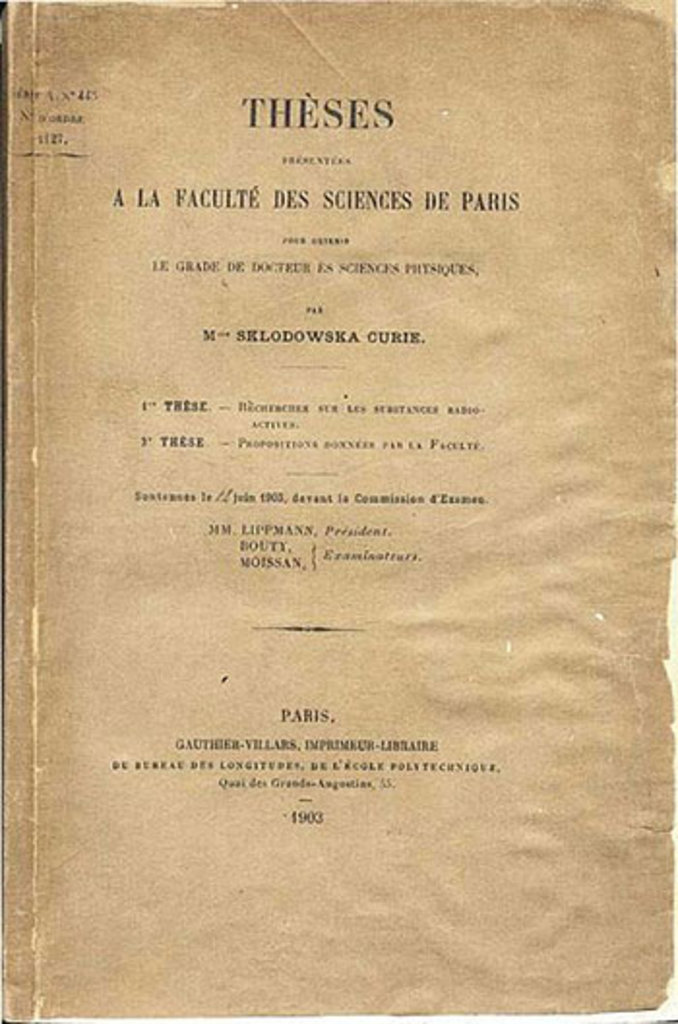
Photo: Public domain, via Wikimedia Commons
Finally, at age 24, she enrolled at the Sorbonne University. She could not attend the University of Warsaw, as her brother had: the Russian government prohibited women from attending university anywhere in its empire. In Paris, she felt unprepared but exhilarated.
“It was like a new world opened to me, the world of science, which I was at last permitted to know in all liberty.”
Marie Curie
Thesis in radiation
Curie decided to do her thesis on radiation, recently discovered in uranium by Henri Becquerel. She found that an ore containing uranium was far more radioactive than could be explained by its uranium content. This led her and her husband, Pierre, to the discovery of a new element that was 400 times more radioactive than uranium. In 1898 it was added to the Periodic Table as polonium, named after Curie’s birth country.
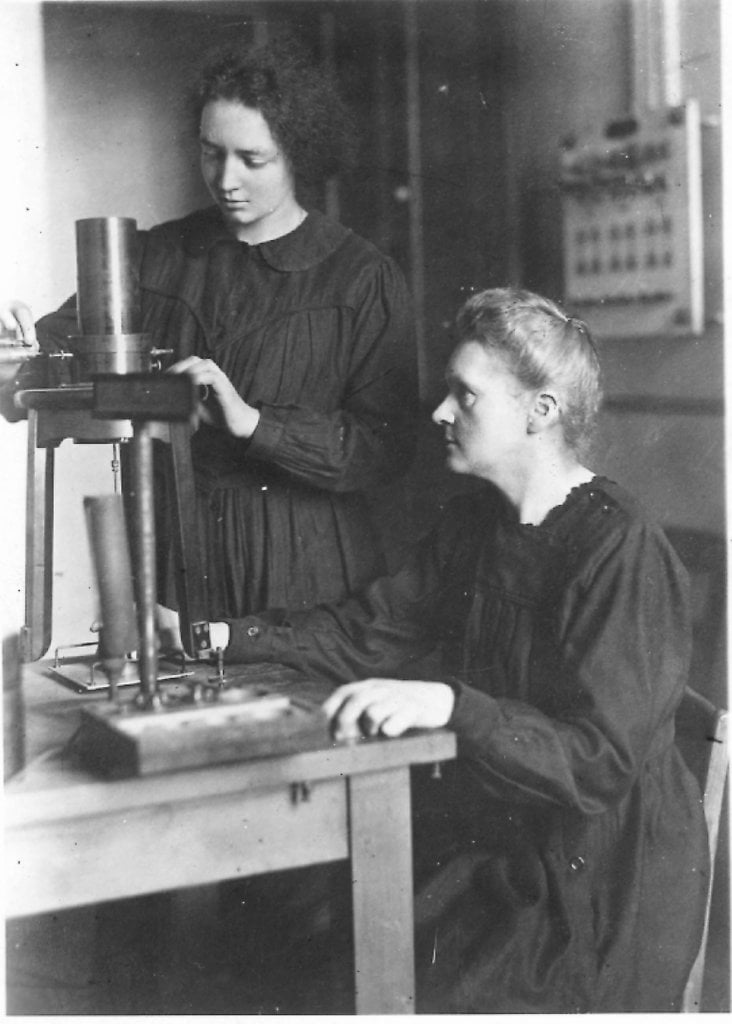
Copyright © Association Curie Joliot-Curie
Photographer unknown
Then Curie discovered an even more radioactive element, radium, and, through observation of radium, made a fundamental discovery: Radiation wasn’t dependent on the organisation of atoms at the molecular level; something was happening inside the atom itself. The atom was not, as scientists believed at the time, inert, indivisible, or even solid.
Nobel Prizes in two scientific categories
For her research in “radiation phenomena,” Curie became, in 1903, the first woman to receive a Nobel Prize. French academics originally proposed only her husband and Henri Becquerel, but Pierre Curie insisted that his wife share the honour.
In 1911, for the isolation of radium, she was awarded another Nobel Prize, this time in chemistry. She was and still is the only person to be awarded Nobel Prizes in two scientific categories. By that time, Curie was world-famous, and the director of the Curie Laboratory at the newly established Radium Institute (today the Curie Institute).
The tragic death of Pierre Curie
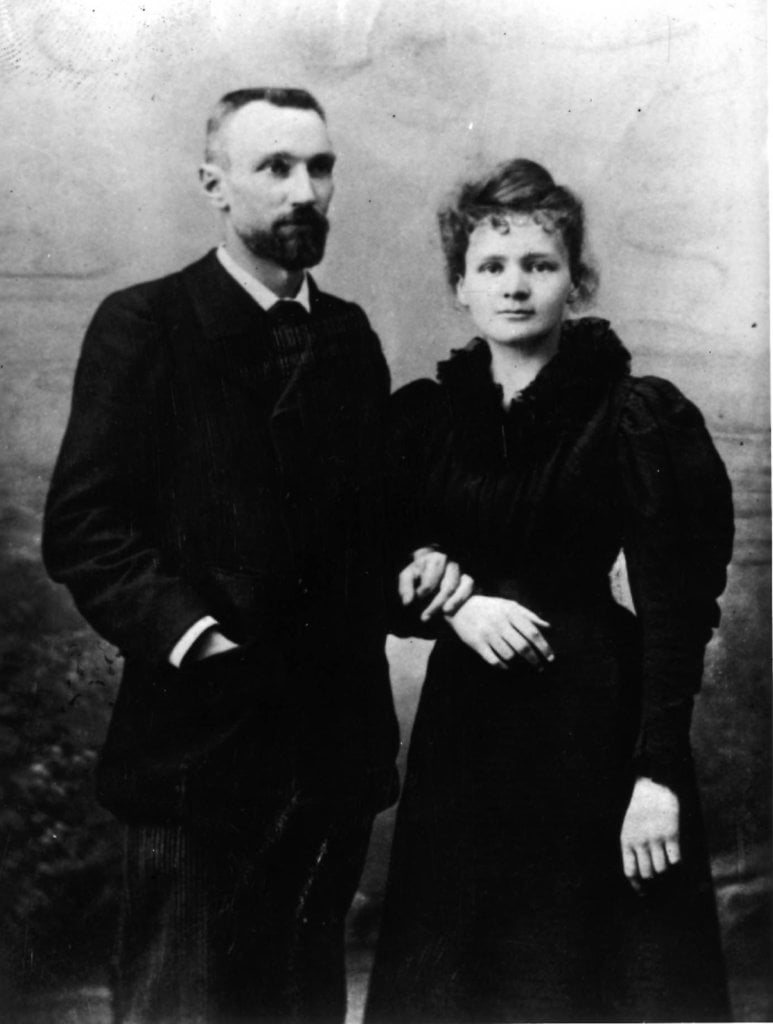
Pierre Curie was the love of Curie’s life and her partner in science. They met in 1894 when Marie Curie worked in Pierre Curie’s lab; they were married the following year. The couple had two daughters, Irène and Eve, and a few years after they married, Pierre Curie abandoned his own research to join his wife’s study of radioactivity. The Curies’ affair of the heart and mind ended tragically not long after Eve was born. In 1906, Pierre Curie was run over by a horse and carriage and killed.
Curie believed scientific research was a public good and championed its utility. She and her husband had discovered that radium destroyed diseased cells faster than healthy cells, and thus that radiation could be used to treat tumours.
During World War I, Curie promoted the use of X-rays; she developed radiological cars – which later became known as “petites Curies” – to allow battlefield surgeons to X-ray wounded soldiers and operate more accurately.
The Curies did not fully appreciate the danger of the radioactive materials they handled. Pierre Curie gave himself a lesion when he purposely exposed his arm to radium. Worse, however, was working for years in a poorly ventilated shed, isolating radium salts from tons of pitchblende ore.
“I was taught that the way of progress was neither swift nor easy.”
Marie Curie
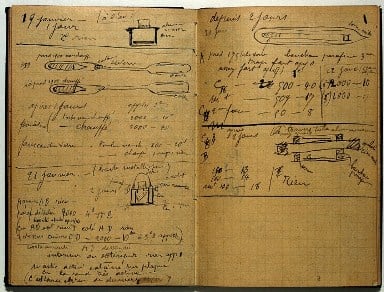
Both Curies were constantly ill from radiation sickness, and Marie Curie’s death from aplastic anemia in 1934, at age 66, was likely caused by radiation exposure. A few of her books and papers are still so radioactive that they are stored in lead boxes. For example, Marie Curie’s notebook from 1899–1902, containing notes from experiments on radioactive substances, is still radioactive and will be for 1,500 years. It seems fitting that Curie left a scientific legacy that is literally untouchable.
Discover more
Q&A
Most asked questions.
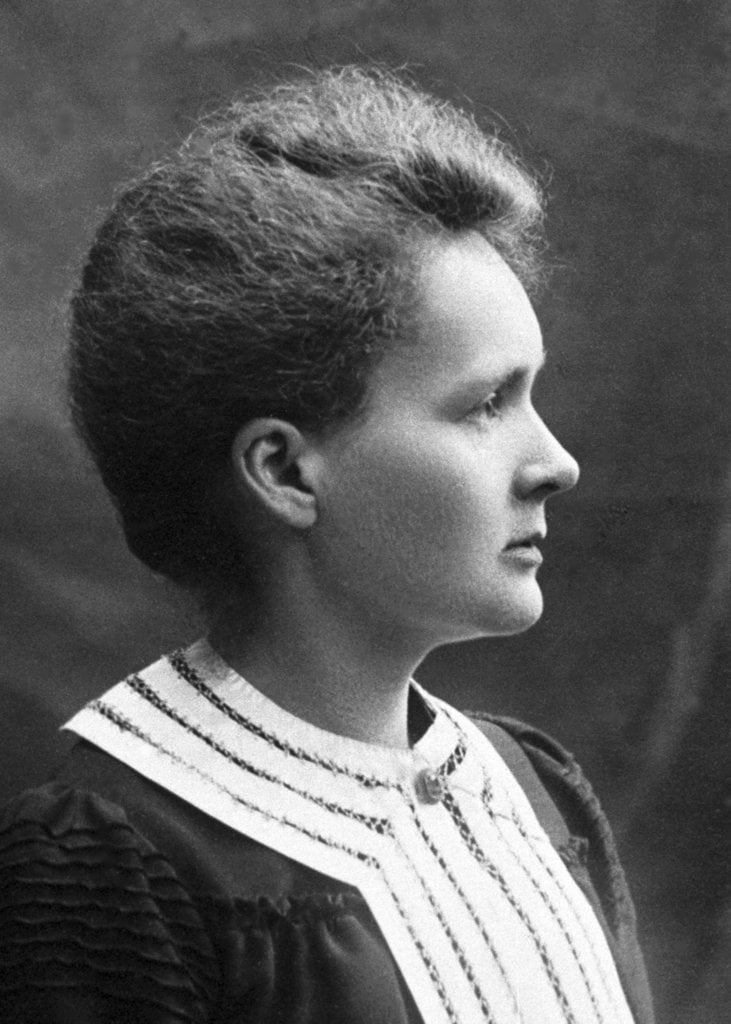
Biographical
Read the biography.
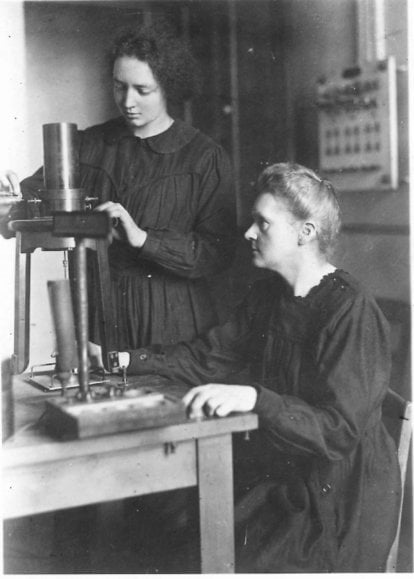
Copyright © Association Curie Joliot-Curie
Photographer unknown
Nominations
Explore the nominations.
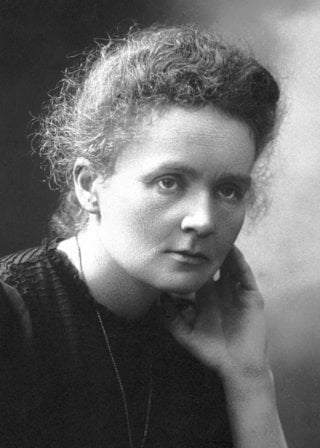
Nobel Prizes and laureates
Six prizes were awarded for achievements that have conferred the greatest benefit to humankind. The 12 laureates' work and discoveries range from proteins' structures and machine learning to fighting for a world free of nuclear weapons.
See them all presented here.
